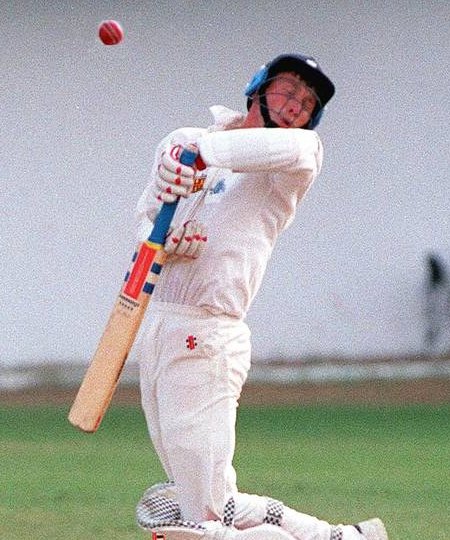
 |
| Index | ||||||
|
Bouncer, Bumper, Bang it in  Essentially there are two different types of bouncer (sometimes called a bumper) - those for which the bowler can be penalised and those for which he cannot. Those for which the bowler is not penalised are the ones that rear up alarmingly from anything other than a short length. They are normally caused by the condition of the pitch, either because it has been badly prepared or because it has become damaged by use. Clearly it would be wrong to penalise the bowler for something outside his control. It might, though, be a reason for changing the pitch or for abandoning the match. The bouncers for which the bowler should be penalised are what the Laws call 'fast short pitched balls' - but there is a bit more to it than that. Before the umpire can take action against the bowler he needs to assess a number of factors: Was the ball fast in the context of the match? What is considered fast on the village green would not be fast for a Test Match. What was the length of the ball? Was it short pitched? If not it is not the bowler's fault. Did it hit the striker or pass him at a dangerous height - generally taken to be round about the upper chest, throat or head? Was it travelling in a dangerous direction, somewhere near where he was when receiving the ball? A ball several feet away from him is not dangerous, one a few inches away may well be. Has the striker been 'softened up' so much that he has become more vulnerable? The repetition of this type of bowling wears a batsman down; that is its intention, but it can increase the danger to the batsman as he becomes more erratic in his handling of the pressure. The umpire is not there to stop the pressure, but he is there to make sure it doesn't develop into danger. He will assess the reactions of each batsman to each bowler and act accordingly. In making these judgements the umpire will take into account the skill of the striker - some batsmen are more able to cope with this type of bowling and are thus not in as much danger as other, less able batsmen might be. Once the umpire judges that the bowling has become dangerous in this way he will call and signal No ball and caution the bowler. Any repetition will also be no-balled. The second No ball will bring with it a final warning, the third will result in the bowler being removed from the attack for the remainder of that innings. After the match the umpires will submit a report to whoever is responsible for the competition. Some competitions, mostly, but not solely, in professional cricket, allow the bowler a set number of balls per over that pass over shoulder height of the striker. Very often the limitation is one and is generally referred to as being 'one for the over'. If the bowler bowls a second one in that over, No ball should be called. The ball that passes harmlessly over head height is punished, not necessarily because it is dangerous, but because it is considered to be unfair. In this case it doesn't even have to be a fast delivery - any ball that pitches and then passes over head height of the striker standing upright at the crease is a No ball. The umpire must decide whether or not it contributes to the repetition sequence. If you see a delivery like this called a Wide by the umpire, don't be too critical - he may simply be implementing special playing conditions applicable to that match or competition. | ||||||